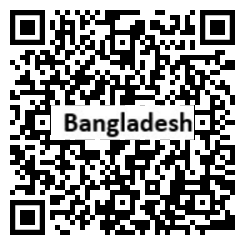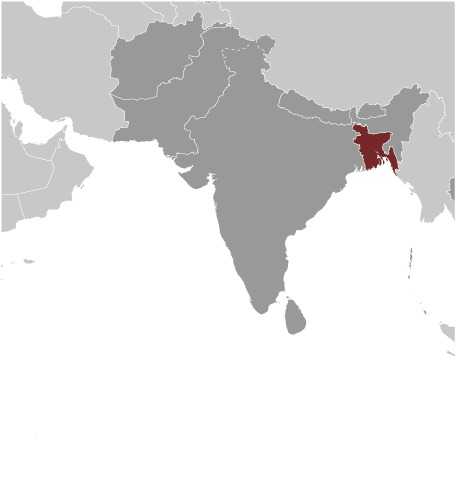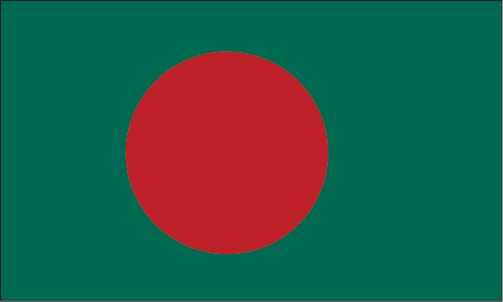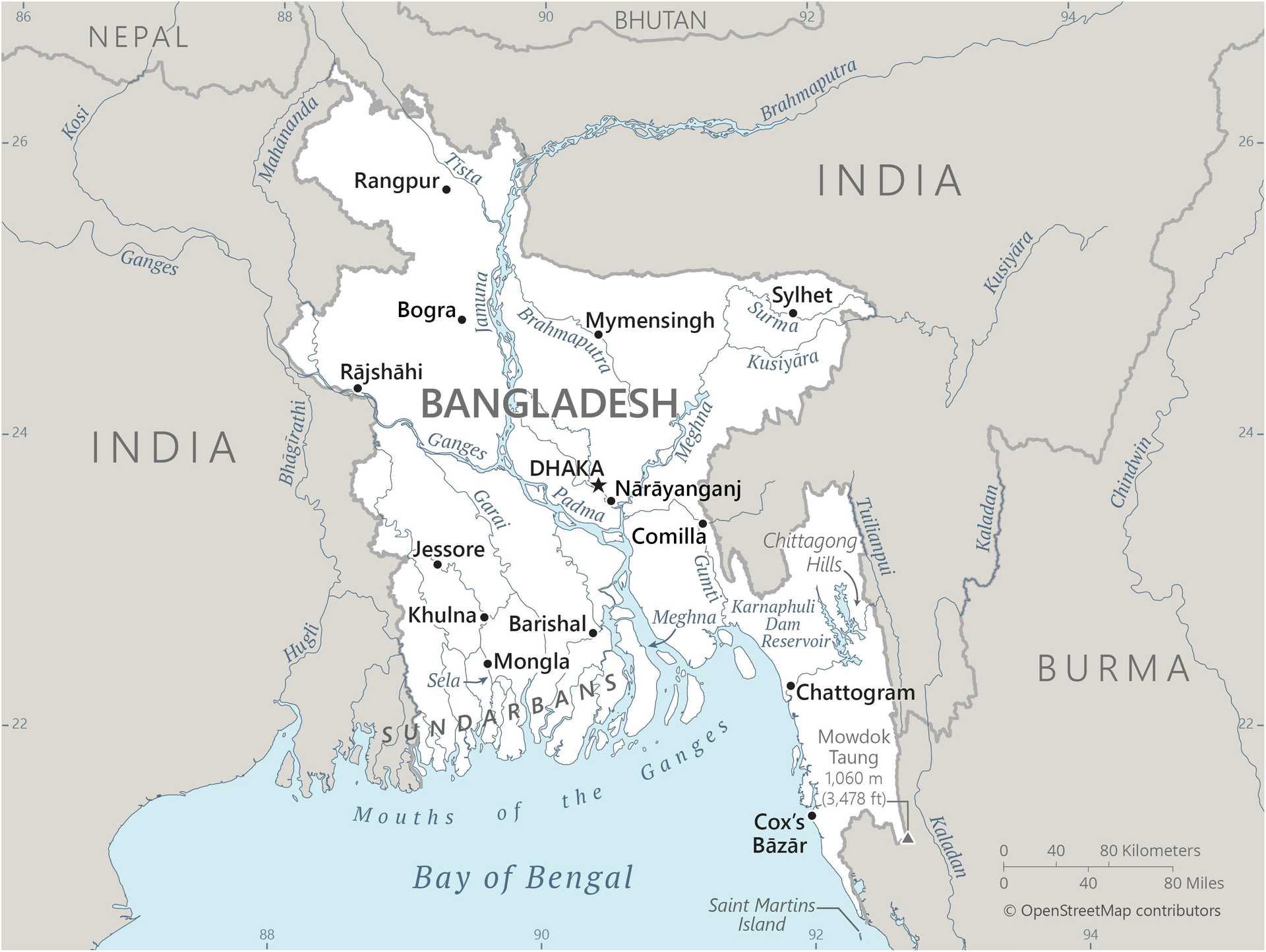Introduction
Background
The huge delta region at the confluence of the Ganges and Brahmaputra River systems - now referred to as Bangladesh - was a loosely incorporated outpost of various empires for much of the first millennium A.D. The Bengali independence movement, led by the Awami League (AL) and supported by India, won independence for Bangladesh in 1971.
Geography
Area
total : 148,460 sq km
land: 130,170 sq km
water: 18,290 sq km
Climate
tropical; mild winter (October to March); hot, humid summer (March to June); humid, warm rainy monsoon (June to October)
Natural resources
natural gas, arable land, timber, coal
People and Society
Population
total: 168,697,184
Ethnic groups
Bengali at least 99%, other indigenous ethnic groups 1% (2022 est.)
Languages
Bangla 98.8% (official, also known as Bengali), other 1.2% (2011 est.)
Religions
Muslim 91%, Hindu 8%, other 1% (2022 est.)
Population growth rate
0.89% (2024 est.)
Government
Government type
parliamentary republic
Capital
name: Dhaka
Executive branch
chief of state: President Mohammad Shahabuddin CHUPPI (since 24 April 2023)
head of government: Prime Minister Sheikh HASINA Wazed (since 6 January 2009)
Legislative branch
description: unicameral House of the Nation or Jatiya Sangsad (350 seats; 300 members in single-seat territorial constituencies directly elected by simple majority vote; 50 members - reserved for women only - indirectly elected by the House of the Nation membership by proportional representation vote using single transferable vote method; all members serve 5-year terms)
Economy
Economic overview
one of the fastest growing emerging market economies; strong economic rebound following COVID-19; significant poverty reduction; exports dominated by textile industry; weakened exports and remittances resulted in declining foreign exchange reserves and 2022 IMF loan request
Real GDP (purchasing power parity)
$1.413 trillion (2023 est.)
$1.336 trillion (2022 est.)
$1.248 trillion (2021 est.)
Real GDP per capita
$8,200 (2023 est.)
$7,800 (2022 est.)
$7,400 (2021 est.)
Agricultural products
rice, milk, potatoes, maize, sugarcane, onions, vegetables, jute, mangoes/guavas, tropical fruits (2022)
Industries
cotton, textiles and clothing, jute, tea, paper, cement, fertilizer, sugar, light engineering
Exports
$58.885 billion (2023 est.)
$60.066 billion (2022 est.)
$49.291 billion (2021 est.)
Exports - partners
US 18%, Germany 16%, UK 8%, Spain 7%, Poland 6% (2022)
Exports - commodities
garments, footwear, fabric, textiles, jute yarn (2022)
Imports
$73.172 billion (2023 est.)
$93.635 billion (2022 est.)
$85.299 billion (2021 est.)
Imports - partners
China 32%, India 17%, Singapore 6%, Malaysia 5%, Indonesia 5% (2022)
Imports - commodities
refined petroleum, cotton fabric, cotton, fabric, fertilizers (2022)
Exchange rates
taka (BDT) per US dollar -
Page last updated: Wednesday, July 24, 2024




